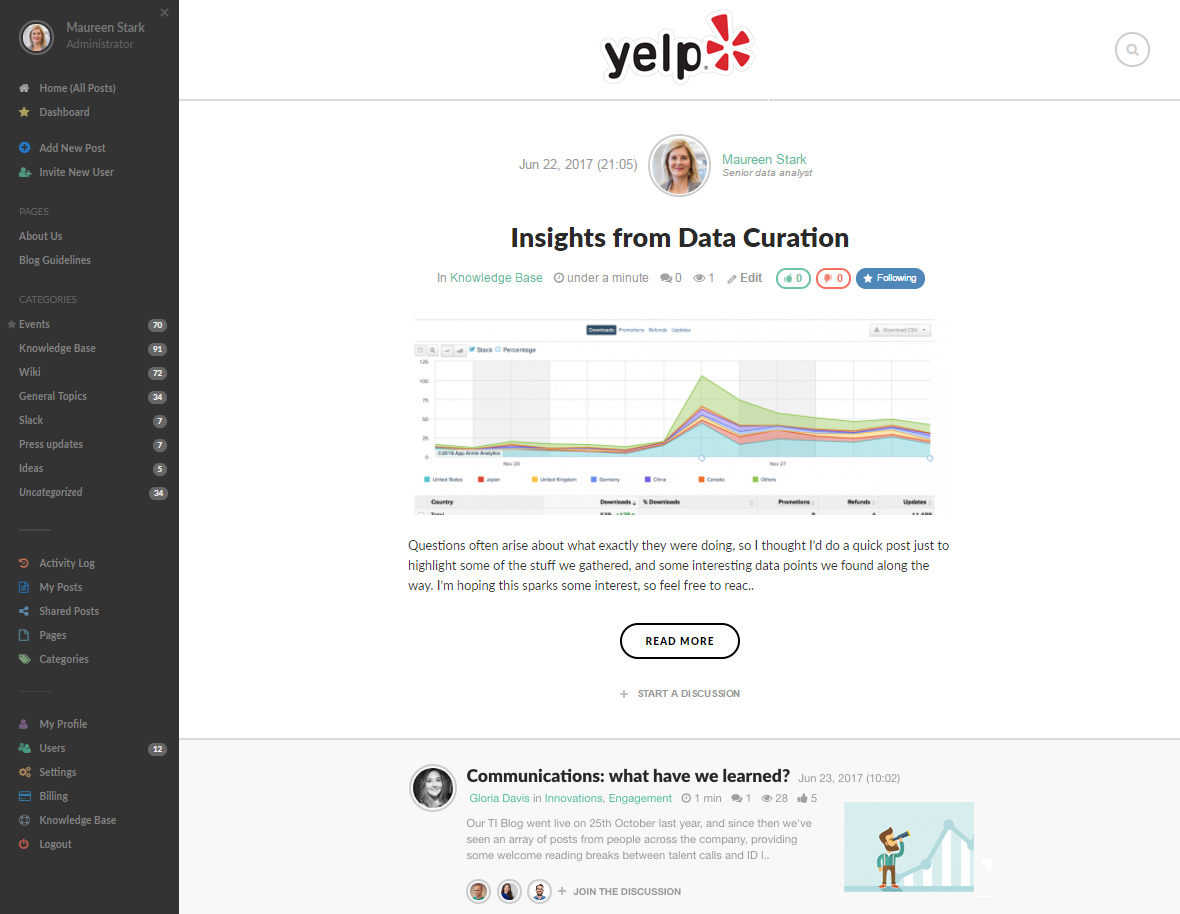
One of the most important qualities managers need is building strong communication channels with employees.
Through solid communication methods, you can develop work-relations built on trust, respect, and understanding. And this can prove to be the difference between standard and successful management.
Discover the best communication techniques to use during project management. And what methods to follow in creating workplace morale and success.
What is considered a good communication technique?
There are three main forms of communication techniques used during project management:
- Interactive communication.
- Pull communication.
- Push communication.
Interactive communication
Interactive communication is used when managers need to disclose sensitive or valuable data. Normally, the information is acknowledged as soon as possible, and can be shared through:
- Phone calls.
- In-person meetings
- Video conferences.
During societal and economic changes, we’ve learned to adapt to new methods of communication.
Onboarding remotely, working from our homes, and building clientele virtually, are all newly normalized business practices. And interactive communication has become the forefront of this, in businesses across the globe.
Meeting ‘face-to-face’ has now been virtualized by technological advancements. And within these meetings, you can still reflect things like reading atmospheres, body language, even tone of voice.
Interactive communication is a great means for gauging specific clientele needs. Not to mention, it’s the best method for presenting new data or updates for ongoing projects. Especially for those who need vital information without delay, like project-workers, contractors, or brokers.
Internal blogging
If you want to create a more open workplace culture, you should consider introducing internal blogging.
It’s a great tool that allows employees to post and keep up with new workplace developments and projects.

Internal blogging counts as one of the most forefront methods for communication in our current digital world. A virtual written form allows us to express and share ourselves on an entirely new platform and audience.
It might sound like a fancy bulletin board or monthly newsletter. But internal blogging homes a platform for content sharing like never before. Whether it’s a quick post on a workplace hack or a short blog piece on a new project – communication like this evokes workplace bonding and cohesion.
Global-scale businesses like Microsoft, Whole Foods, and Facebook all champion internal blogging – and they aren’t doing too badly. Read why you should consider starting an internal blog in your business.
Push communication
Push communication is used to send across information or data without the need for an instant response. Some methods used for push communication involve:
- Emails.
- Newsletters and bulletins.
- Project plans and templates.
The information sent through push communication isn’t normally ‘time-critical’. It’s usually used for sending across project outlines or updates to plans.
You shouldn’t stick to the push method for all forms of workplace communication. It doesn’t allow receptive communication from clients or project members. And employees may view the one-sided form of communication as quite neglectful.
Ideally, push communication should be used in things like monthly newsletters or project assessments. And also when sending across information and reviews to clients.
Pull communication
Pull communication allows us to attain information and data whenever we want it. Some examples of pull communication can include:
-
Websites and landing pages.
-
Knowledge base.
-
Management software and apps.
It’s proven especially useful when clients want to access project information at their own leisure. Or when information needs to be relayed to contractors. It personifies a clear level of trust and transparency between you and your project members or clients.
How can I ensure good communication during projects?

Within the business world, you should make use of all three forms of communication techniques.
And of course, it also falls on your clientele and their service needs. These example steps can help create good workplace communication.
-
Use interactive communication when immediate relay and response is needed.
-
Use pull communication when presenting large amounts of information.
-
Use push communication when clients and project members want accessibility.
There are some additional techniques you can internalize to help ensure good communication during projects.
Hold meetings on a regular basis
One of the most efficient ways to ensure everyone is up-to-speed with project timelines and accomplishments is through regular communication.
Holding regular meetings is a proven method for increasing shared understanding. This is especially important for information like deadlines, objectives, and changes.
The meeting not only allows managers to present information but also allows project members to express themselves. They can use this time to ask ideas and questions about the project. Or even raise issues and concerns they’ve come across during production.
Meetings like these can prove to be a great method for providing guidance and support. Which can help employees feel valued, respected, and cared for – a fundamental legal duty which falls to employers and managers.
However, it’s wise to regulate these meetings, by annotating points and sticking to a reasonable time length for each one. You can also present a scheme where people can share any ideas and questions about the project.
Aim for precise and clear communication
It might prove impossible to action every request raised immediately and without hesitation. But when you relay updates and feedback, take care to ensure you present it clearly and with precision.
Be aware not to waste time during in-person communication, especially when sending back responses. That way, burning questions are answered and projects can continue towards completion.
Dedicate some time to outline your response by considering:
-
Who are you speaking to (are they employees, clients, customers, etc.?).
-
How soon do they require your feedback?
-
If additional information is needed (any past requests raised which need addressing?).
Listen to all requests and opinions
We’re not asking you to follow through with every idea in the suggestion box. But try listening to everyone’s opinion and taking them into consideration.
A shared perspective on an idea or viewpoint can prove to be more productive than evaluating it with your subconscious. Your employees will respect you for taking the time to evaluate their idea and providing thorough feedback.
There’s no such thing as the perfect model for workplace communication. Different methods will suit different types of businesses.
Workplace culture sets the tone for employee behavior and output. So, it’s up to you to trial and utilize the best form that fits your company setup. By building the best method, you can significantly enhance employee engagement, work accomplishments, and clientele commitment.
As each bond strengthens, the results of good communication will turn into exceptional project completion and business succession.
